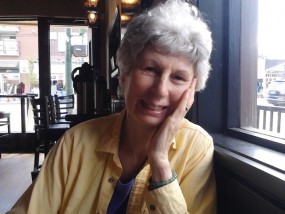I like rubbing the edges of document and memory/fiction against one another. I like the friction that is produced between the stark reporting of document, the pseudo-factual language of journalism, and the more emotional, even poetic, language of memory. That’s why I used such a hodgepodge of sources in Ana Historic, a little nineteenth-century and very local journalism that sounds like a gossip column, a 1906 school textbook, various historical accounts, some contemporary feminist theory, and a school teacher’s diary from 1873 that was completely fictitious.
—Daphne Marlatt (qtd. in Kossew 8-9)
Influenced by both avant-garde poetry and Virginia Woolf’s stream of consciousness narrative mode, Daphne Marlatt’s Ana Historic follows the mind of the narrator, Annie, at work. While researching the history of Mrs. Richards, a mysterious woman who appears in the civic archives of Vancouver in 1873, Annie’s mind jumps from her research to her personal struggle with her mother’s suicide, intermingling the three women’s stories on the page. The layout and typography change as perspective shifts, offering a collage of the women’s lives, serving as analogues to one another.
The erasure of the feminine from history dominates the text, as all three generations of women embody the progress of an inter-generational struggle against female subordination and exclusion. Mrs. Richards is slowly resurrected from patriarchal genealogies. Annie’s research lends a voice back to a woman without one, opening the reader to the socio-political origins of feminist struggle in the late 19th century. Annie’s late mother’s lack of a voice serves as the next generational iteration of such erasure, and an extreme example of the effects of the problem that has no name
(Friedan 63; see Second-wave Feminist Expansion
), or the widespread mid-twentieth-century female discontent with being relegated to the domestic sphere in an increasingly modern world. Annie herself is the catalyst for an emergence from erasure; she is a researcher stumbling upon a history that is as much a part of her own life as it is part of a feminist genealogy of change.
This novel explores the mutable identities of a woman erased from history, of a mother unable to cope with the rules that govern her access to society, and of a daughter striving to move beyond the societal strictures that caused the death of her mother. The novel proposes that women in dominant historical narratives can only be revealed through the diligent work of women in the future through generations of continued struggle. This novel subverts a neat, linear history (with a parallel subversion of linear narrative form echoed in its structure), choosing instead to open the reader to the possibilities of cross-generational connections that link feminist progress and freedom.
Questions to Keep in Mind While Reading
For help with critical reading, see Close Reading Prose.
- How does the form of the novel (collage, bricolage, assemblage) subvert a linear account of history?
- Consider naming in the text. How do the characters weave in and out of one another’s stories, and to what effect?
- How do the lives and choices of Annie and Ina collapse into those of Ana? What purpose does Ana serve in the personal narrative of Annie and her mother?
Further Resources
- Dunlop, Rishma.
Archives of Desire: Rewriting Maternal History in Daphne Marlatt’s Ana Historic.
Journal of the Association for Research on Mothering 4.2 (2002): 65-72. Print.
Works Cited
- Griffin, Susan. Woman and Nature: The Roaring Inside Her. New York: Harper & Row, 1978. Print.
- Marlatt, Daphne. Ana Historic. Toronto: Coach House, 1988. Print.









 ©
©